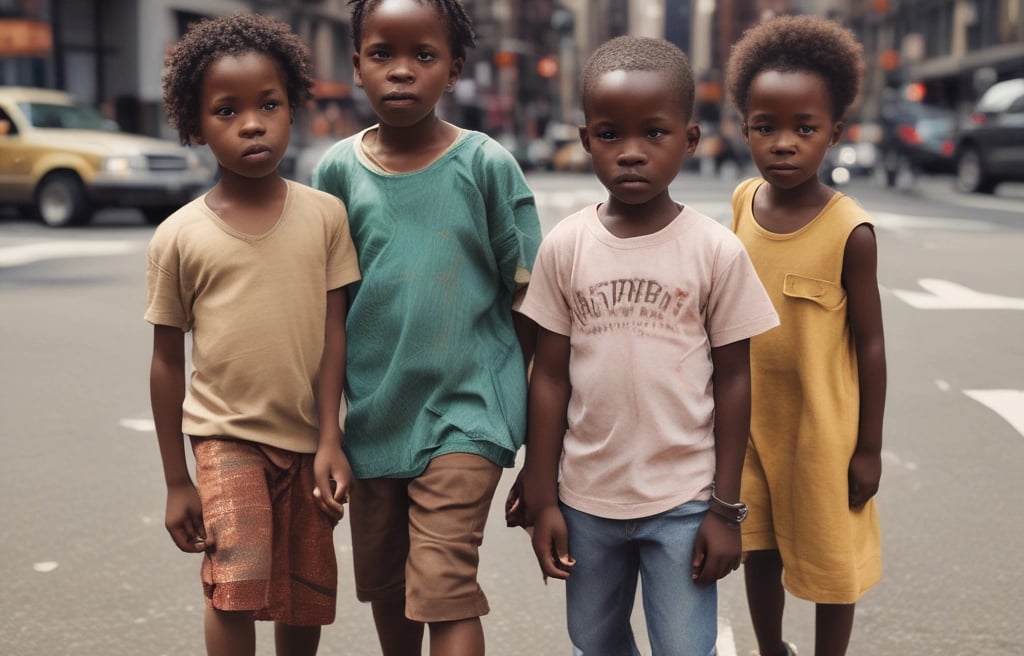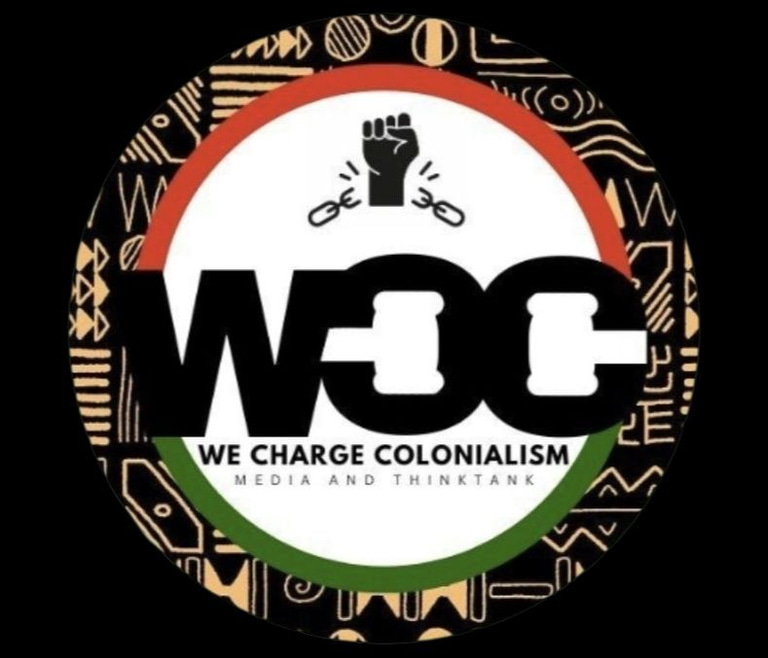Afrikan Youth In Crisis
Nehemi'EL Ibrihim-Simms
1/16/20256 min read


As an educator in New York City, I have taught in private, charter, public and alternative schools. I am in the midst of gathering a first-hand account of the dynamic of attitudes and practices of the wide range of institutions – families, public school administrations, state agencies, and grassroots structures – that make up our communities. As a brotha growing up in Harlem and East Flatbush I have witnessed and participated in the dysfunction of the communities. Now as a father, walking these same streets, speaking with students, families and community institutions, to say that I am alarmed at the state of our communities is an understatement. The question of how these different institutions interface within the sphere of the dynamic challenges that our people face, within the context of a proper historical-contemporary spirocyclical continuum?
Doubling as an operative of the survival and development of Afrikan people, the idea of the “education” of Afrikan People, particularly Afrikan children, has been paramount in my praxis of liberation. Not only because it is a dominant theme in movement discourse, but primarily as an observation in my adolescence of the power and influence of the teacher and school system in this society. Also some of my chief inspirations were teachers: Kwame Nkrumah, Bob Moses, Ella Baker. Their shared strategy of harnessing young people as a social force to challenge the thinking processes and accepted ideas of the society in which they existed made sense. This strategy resonated with the Jamaican proverb that it is easier to bend a tree when it is young rather than when it is old.
The education-socialization processes that grew out of the foundational oppressor-oppressed dynamic. The dominant theories of education-socialization, an expression of the struggle between non-Afrikan power and Afrikan powerlessness, concretely intertwined with a building system creates “psycho-technological creative process[es]” that serve to engineer and reinforce the dominant epistemic-valuation hierarchy of the existing non-Afrikan social system, and includes much more than what happens within the school-building. The pervasive philosophy and character of the society work to condition children to conform to, adopt and replicate its norms and ideals, its Americanism, which ultimately “self-alienates,” as Nana Amos Wilson terms it, from our own self and self-interests. because of our specific historical situation.
From this perspective I put forward the critical observation, the system of public education – here conceptualized as the dynamic of the positive and negative institutions that make up our communities – in so far as I have participated both as a student and a teacher, do not address the problems of our communities and do not develop our children. In fact, I further maintain that these institutions can not address the problems. On the contrary, much of what happens in these institutions exacerbates our problems and serves to further alienate our young people from any semblance of what is necessary for their own survival and development , much less that of the race. I maintain that much of the public educational institutions that I have worked in serve as antagonisms to our social ills, not remedies! White women in charge of Black students; false narratives taught as “history”; and an altogether inability to deal with the social realities of the neighborhoods that produce the families and children that attend the school. On the other hand, to speak of the positive grassroots institutions, with the intention to stand as an opposing and auxiliary force against the damage being done, is to describe a limited service whose output pales in comparison to that of the white supremacist machine that it seeks to rival.
As a result, you have in New York City, what I would call a serious problem. A silent epidemic of high-schoolers and middle schoolers addicted to vapes and Marijuana, a violent gang culture, a mental health crisis that is claiming lives and living those left alive disoriented and tired, and an overrepresentation of our people in the prison system.
The state of mental health issues amongst the black population residing within the United States is at an alarming place. This is not a story one needs statistics to understand. All one needs to do is to walk down 125th street in Harlem, starting at Lexington Avenue and continuing until Morningside and the stench of the drugs coupled with the sight of ghastly sores and addicts sprawled about the sidewalk while children go to and from school will paint a clear picture. If this doesn’t suffice, take a stroll down Marcus Garvey Blvd in Bed Stuy until you hit the Pamoja House, a homeless shelter for men. Go inside and you’ll see the hundreds of young Black men dealing with drug addiction, homelessness, and mental health issues. Our population is facing the brunt of a dynamic of forces: post traumatic slave syndrome, the school to prison pipeline, and the influences of social media and the internet. The anger, frustration, confusion and directionlessness seen in the eyes of a section of our youth are not explained by the fancy statistics that are published in scholarly articles year-round, but they do serve to help paint the picture. The statistics point towards growing trends of discontent and social confusion.
For example, symptoms indicative of mental discontent like suicide are growing fast amongst the Black population. Not only has the suicide rate of black youth been increasing more rapidly than any other racial group in this country, but in 2017 suicide was the second-leading cause of death for black youth between the ages of 10-17. Suicide attempts for black adolescents rose by 73% between 1991-2017. Research also suggests a relationship between teens who spend excessive amounts of time in front of screens and depressive symptoms and suicidal thoughts. What can be behind such an alarming phenomena ?
While federal census reports will show that poverty for Black people has reached all-time lows in the last 10 years, a combination of food deserts, low access to affordable housing, growing income and wealth inequality, and inequities in healthcare continue to paint another narrative of what Black communities are facing in terms of socio-economic accessibility. Sources report that black children represent gross disparities in systems like foster care and child protective services. The NYC Family Policy Project reports that Black children are 10 times more likely to enter foster care than white or Asian children. Other reports indicate that Black families are overly represented in the “family regulation system.” 41% of the time the Administration of Child Services (ACS) decides to file a case against a household in family court, it is against a Black parent. Black children are subject to 38% of reports filed by ACS and 52% of children removed from their home without a court order, while comprising just 23% of the New York City population. In fact, many of the children that I have worked with, who the state has labeled “emotionally disturbed” or given an Individualized Learning Plan (IEP) and placed into special education programs have had run-ins with the foster care system.
To clarify, the family-institution – a primary institution of our indigenous socio-political philosophy and a critical part of our ability to be self-determined – in the past acted as a barrier, insulating the children from the perversion and dilution of the colonial system, is now in serious turmoil. Undoubtedly, our families are finding it difficult to cope with the rising social pressures, the intrusive reach of social media and advertising, and the state’s involvement in parenting. The cultural blanket in which our people have wrapped our particular way of seeing, being and interacting is being torn apart and our flesh, already scarred from a complicated history of exploitation, violence and trauma, is being laid bare to the colonial shards of glass. In my personal practice, I have seen the difference between young people that come from households where both parents are in harmony with one another and fully involved in the child’s life, as opposed to the households where one parent is shouldering the weight of child-rearing. Not only is the financial responsibility taxing, but so is the mental-emotional toll of being solely responsible for the development of a human being. To illustrate the internal stress acting on our households, studies are showing that blacks are waiting longer to get married, and show greater trends of marital instability regardless of socio-economic class.
As a result, public institutions that aggravate social wounds as opposed to mitigating them, are bound to play a role in the billion dollar mass incarceration system, capitalizing on the disarray of a group of people who suffer from historical trauma and cultural disorientation. In proper context, the disproportionate representation of Black folks in crime and criminal behavior regardless of temporal or cultural definition, occur not in a vacuum, but within a “complex matrix of interpersonal, social, intergroup relations, and other eco-psychological forces.” Crime is a social product. The state can never acknowledge this reality because it is self-condemning. As a result, academics and their credentials explain the circumstances using coded eugenics language attributing the problems to culture and personality.
Our communities, families, and children are facing extraneous circumstances that the current system of education does not have the ability or intention to remedy. The public system of education – its theory, design and practice – is an antagonism acting as an extension of the colonialist psycho socio-political apparatus. The ethos of this apparatus is to manipulate the “valutational/perceptual attitudes” of our people, and to frankly waste as much of our time throughout our formative years as possible. As Black folks concerned with the survival and development of our population we must be concerned with the development of dual and contending power in the form of institutions structured on a theory of mutual aid and Afrikan political philosophy. Viewing our communities in the context of “colonies,” or populations whose public institutions are controlled by other groups, is a critical framework necessary in engineering any kind of response to the predicament of our people – pedagogical practices included.
